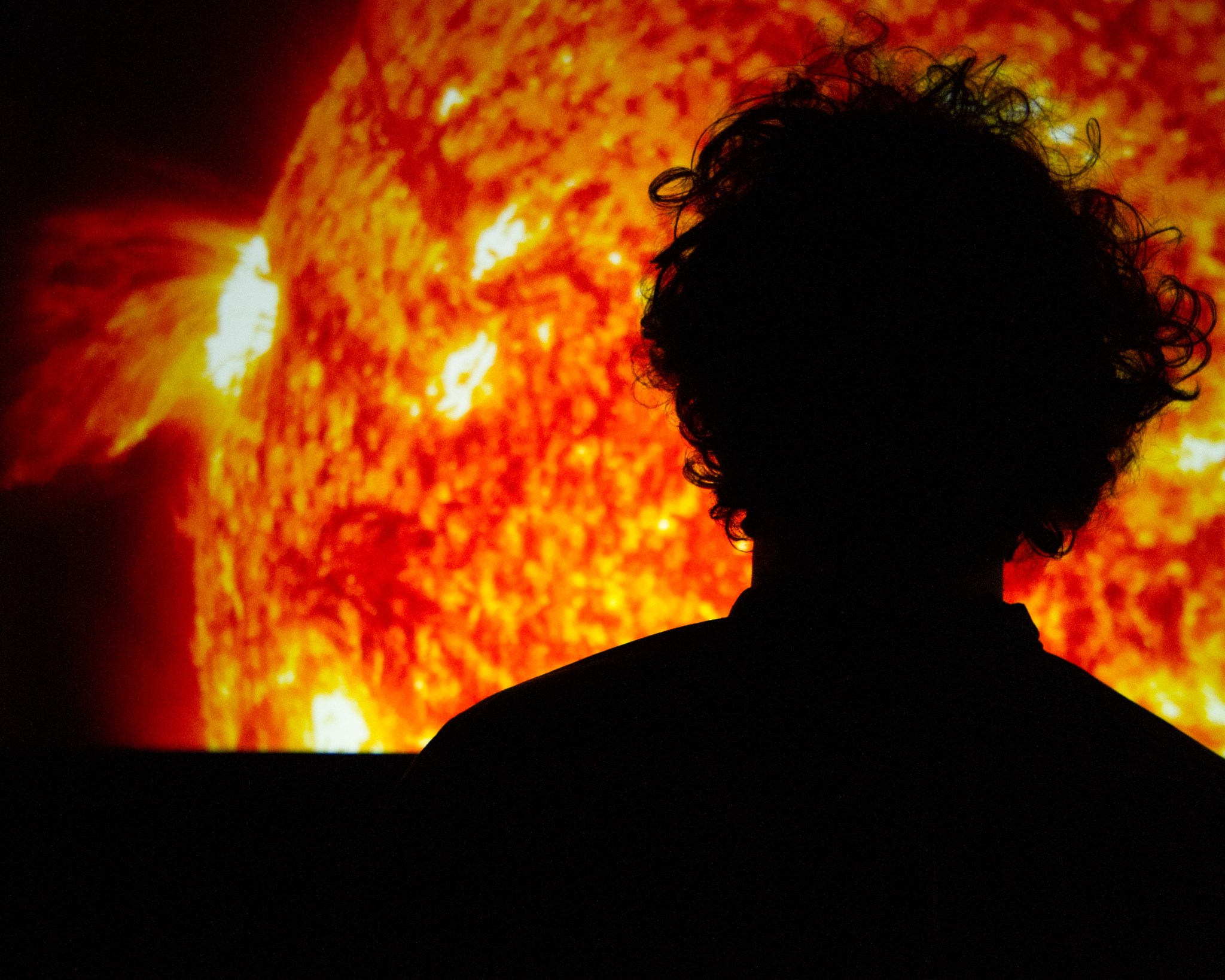NASA’s Solarium invites visitors to get up close and personal with the sun on March 18, 2017, in celebration of Sun-Earth Day at the American Museum of Natural History in New York City. The museum’s Sun-Earth Day program will explore the special, ever-changing connection between Earth and the sun.
Solarium is an immersive digital art installation — and a moving combination of art and science — that uses data from NASA’s Solar Dynamics Observatory, or SDO, to take visitors into the very atmosphere of the sun. It’s easy to think of the sun as a distant, unchanging ball of light, but Solarium introduces people to the dynamic, powerful nature of the sun, which can be hard to observe from Earth.
Artists at NASA’s Goddard Space Flight Center in Greenbelt, Maryland, produced time-lapsed SDO footage to present views of the sun’s boiling surface, solar flares, eruptions and loop-like structures. The dramatic footage is accompanied by a deep, steady thrumming — an ambient soundtrack based on sonified solar data and processed at Stanford University.
“Though the installation is made from the same data scientists use to study the sun, we’ve created a context where anyone can have an experience with it,” Goddard video producer Genna Duberstein said. “At the heart of both science and art is observation, and Solarium invites you to be mindful and take that step.”
The exhibit is the work of Duberstein, Goddard video producer Scott Weissinger and data visualizer Tom Bridgman. SDO records the solar images in the ones and zeroes of binary code, which computers on Earth then translate into black-and-white pictures. Later, the pictures are colorized, with different colors representing the distinct ultraviolet wavelengths that SDO images to observe different phenomena on the sun. One minute of footage is the result of roughly 10 hours’ worth of work, as images are formatted specifically for each installation site.
Solarium will be open on March 18 from 11 a.m. to 4 p.m., and is free for museum members or with museum admission.
For more information on Solarium and the artists behind it, visit: https://www.nasa.gov/solarium
By Lina Tran
NASA’s Goddard Space Flight Center, Greenbelt, Md.























